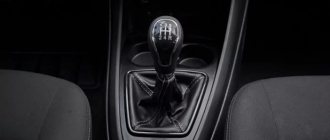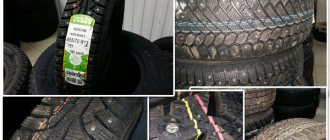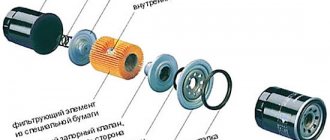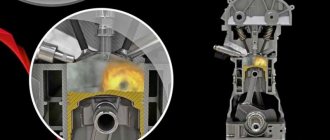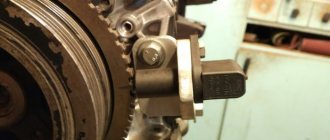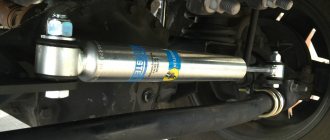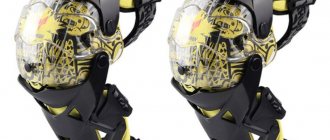However, there are tires with colored dots and stripes. What do the colored stripes on tires mean and is it necessary to pay attention to them when choosing and installing them?
The colored lines on tires are on the surface in contact with the road surface. They can be located inside the grooves and run along the upper plane. As the tread height decreases, some lines may disappear, but most remain. From constant contact with the asphalt surface, over time, not a trace will remain of the multi-colored layer.
What do yellow dots or triangles on tires mean?
The yellow dot on a tire is one of the most common markers, so we start with its description. Thus, based on static balancing, the lightest place on the car tire is established. To understand why this is needed, you need to find the L marking on the sidewall of the rubber.
Thus, we will install the easiest place indicated by the manufacturer. The yellow marker, in turn, will be on the exact opposite side. But there are times when the factory does not put the letter L on the tire.
In such a situation, we place it as follows: the yellow mark should be located next to the nipple through which pumping occurs. This is useful in cases where we need to balance the tire and use as few additional weights as possible.
Colored stripes on tires
- Colored stripes applied around the circumference of the tread, or inside the grooves. Such stripes confuse buyers the most, because there are many rumors about these stripes related to possible defects, bad tire conditions, etc. But everything is simple, such stripes are applied for the convenience of factory or warehouse workers so that they can quickly distinguish tires by size or model. Every hour the plant produces hundreds of tires of different sizes with identical tread patterns. Finished products are sorted, folded, prepared for export and there is a high chance of error. This is fraught with financial losses and loss of time.
What do red dots and triangles on tires mean?
Colored markings on tires may also be red - what does this mean? As a rule, dots, triangles, and less often circles are applied. They are located opposite the lightest point on the tire and make installation easier for service station workers.
There are situations when the letter L is not on the sidewall. This means that the orange or red mark will be located in the opposite direction from the one where the pumping valve is located.
How to ensure maximum accuracy in your wheel balancing procedure
About the design and operation of a car. What is the difference between 92 gasoline and 95. Compression ratio and a modern car. From a technical point of view
1) Rotation speed.
Modern machines have several fixed rotation speeds - from 150 to 400 rpm. Along with an increase in this indicator, the accuracy of wheel balancing improves: the machine becomes more susceptible to imbalance.
2) Balancing accuracy.
It is adjusted according to a special equipment scale, ranging from one to twenty or more grams. In other words, if the balancing accuracy is set to 20 g, then the equipment will not take into account an imbalance of 19 g. And this is already a significant deviation from the norm, accompanied by a beating of the steering wheel.
3. Number of wheel starts.
To eliminate the imbalance, special weights are installed. The craftsmen determine the location and weight of the weights in stages, making step-by-step starts of the wheel. The more test runs are made, the more accurately the installation location and weight of the weights will be determined.
4) It is necessary to ensure that the axis of the wheel mounting on the machine coincides with its actual axis of rotation.
To do this, you need to mount the wheel on the machine using the disk mounting holes. The exception is Citroen cars, where the central hole of the disc is used for alignment.
5) Carrying out final balancing.
This procedure is very important for high-speed cars. Final balancing involves adjustment after mounting the wheel on the hub, at a rotation speed of 1000 rpm. Using Haweka adapters eliminates the need for final balancing.
6) Pre-wash wheels.
High-quality automatic washing is carried out, often using cleaning granules. Manual cleaning of wheels is undesirable: small particles of dirt and stones stuck in the tread will negatively affect the accuracy of the procedure.
Note: the large error of the machines simplifies the work of unscrupulous craftsmen - wheel balancing is carried out quickly, although the result obtained is almost zero. In case of claims from the car owner, would-be craftsmen rely on the poor condition of the roads.
Benefits of proper wheel balancing
1. Comfortable, safe ride. Predicted behavior of a car on the road.
2. Extension of tire service life - from 25%.
3. Fuel economy - about 12%.
4. Preservation of suspension. This guarantees reduced running gear maintenance costs.
Technology violations
The weight of nearby weights should not exceed 60 g. Exceeding the declared value indicates incorrect assembly of the wheel: the valve does not coincide with the yellow mark on the tire. But this is far from the only mistake that amateurs make when balancing wheels.
Other errors:
- Balancing tires or wheels covered in mud. In a good service, the wheels are always thoroughly washed, removing the previously installed compensating weights.
- A dirty, dusty machine is being used.
- Lack of special lubricant on the disk sides. Because of this, the tires do not fit correctly onto the disc. Tire fitters rely on the quality of the tire, but basic inflation puts everything in its place.
- The colored mark is located far from the nipple, although it should be exactly the opposite.
Remember, proper wheel balancing is the key to your safety on the road. Therefore, use the services of proven, competent specialists. Which service should or should not be used, read the article: “Proper tire fitting - who to trust.”
Thanks for visiting my blog!
I hope that the information was useful to you.
Be sure to watch the video.
What does the white stamp with a number on tires mean?
Various colored circles and stamps are intended primarily for employees of tire service stations. However, thanks to modern equipment, they can be easily balanced without paying much attention to this marking. In addition, numbers painted in white paint in a certain geometric shape are a kind of sign of quality.
Manufacturers indicate that the rubber has passed the necessary stages of technological control and is fully suitable for use. To apply color images, the tread area or special grooves on it are usually used.
What does a white circle or dot on tires mean?
Unlike the markings described above, white circles (dots) have a slightly different purpose. They are used to indicate the most flexible part of a car wheel tire. Such a mark should be located at an angle of 180 degrees from the lightest part of the tire (it may be designated by the letter L of the Latin alphabet, but it may also not be there).
In contrast, on the sidewall of the tire there may be a white circle in which the manufacturer puts a number. This will be evidence of confirmation of the technical characteristics declared by the manufacturer. If a defect or defect is discovered, it will be easier for the buyer to prove their rights to a replacement or return.
What do the digital marks on tires mean?
Numerous digital marks indicate physical characteristics - they must be correlated with the data on the rims in order to choose the right tires. On each such product you can see alphabetic and numerical designations, which are indicated through a fraction.
For example, let's take a set of characters 195/65 R13. The first indicator will tell us that the tire width is 195 mm. The next indicator is the percentage ratio of the tire profile height to its width. And finally, the last entry indicates the wheel diameter required for the mount. This is followed by markings of the speed index and the maximum permissible load.
You should not experiment with the tires of your car, since the manufacturer provides them with a certain set of technical characteristics that these products must meet. In other words, the set values provide specific driving characteristics.
What does the color of the stripe mean?
In light of the above, it becomes clear that the color of the stripe is a symbol that is adopted by the plant management for internal use. There is no point in racking your brains and making assumptions. Moreover, create a problem around it.
Many controversial issues have a simple explanation. The main accompanying document for a tire is a technical passport. It reflects the technical characteristics of the wheel, information about the manufacturer, and indicates warranty obligations. Only the technical passport has legal force in the event of controversial situations.
What do the longitudinal lines on the tire tread mean?
Multi-colored longitudinal stripes are interpreted differently by drivers, and there are many versions on this matter that contradict each other. It is generally accepted that this is a kind of indicator of product wear. However, in fact, the manufacturer in this way marks a batch of finished tires, which are collected in warehouses in huge quantities.
Such lines may be present on the rim of the tread or on its outer part, where they will be clearly visible. The lines differ from each other not only in color, but also in thickness. We can say that the manufacturer encodes information in this way, the meaning of which is known only to a limited circle of people. This information is only valuable before the tire is installed, because the lines get erased very quickly. However, when buying tires, it is advisable to take them from the same production batch, since they may differ in weight by several grams.
Thus, when buying new car tires in a store, we must focus not only on appearance or cost, but also on the presence of a certain marking. It is applied by the manufacturer to the side of the product. Friends, we invite you to share your thoughts on how useful such markings were when buying tires for your car!
Not all motorists know this.
Each of us seems to know everything about tires: when to change them if the tread wears out, that it is necessary to change tires when the seasons change, and also that it is necessary to buy a new tire if there is a hernia on the wheel. But not everyone knows why the manufacturer puts multi-colored dots or triangles on new tires. Do not know? Now we'll tell you.
When you look at a new tire, you may have seen a small red/orange, yellow, or white dot on the sidewall (some auto tire manufacturers may also put a triangle instead of a dot).
Most car enthusiasts probably just assume that this dot or triangle is there for some internal manufacturing reason during the tire manufacturing process. But in fact, these dots on new tires are extremely useful when you install a new set of tires on your wheels.
